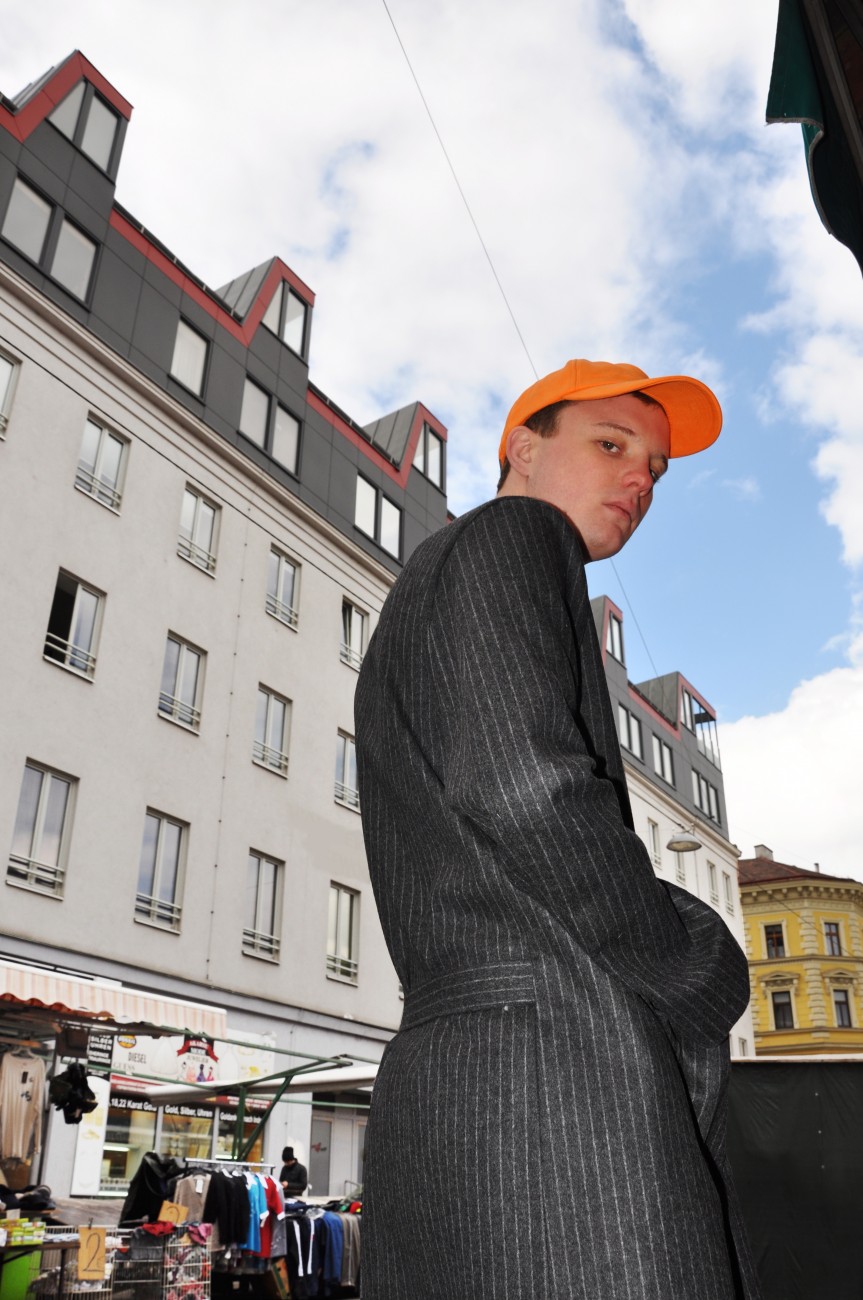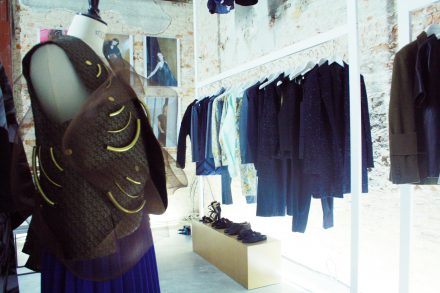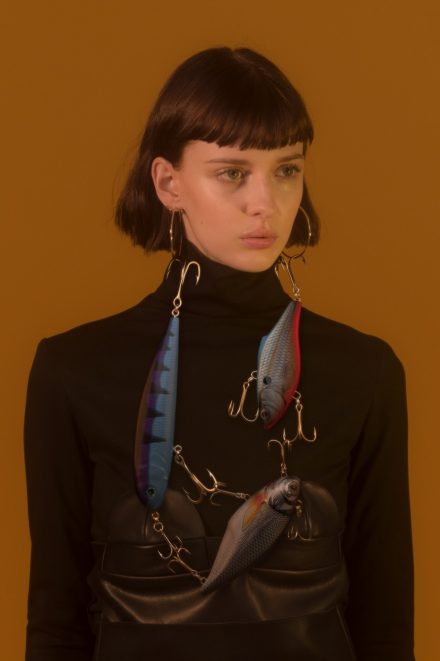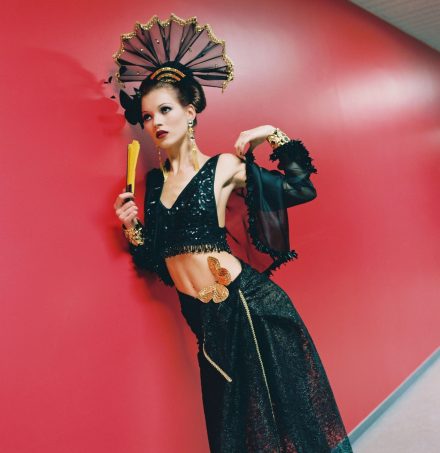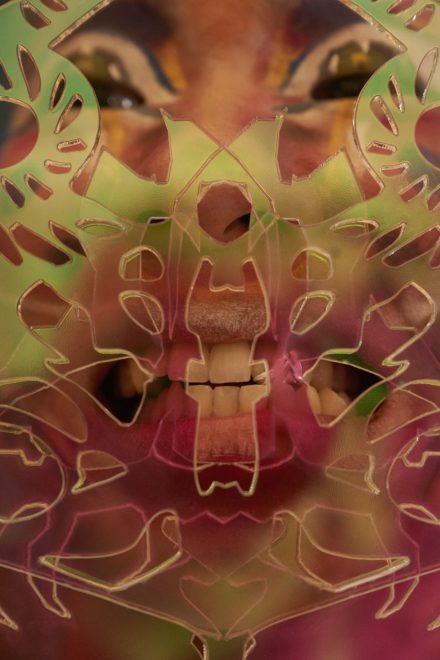After this year’s graduate shows and with some time left until Berlin Fashion Week coming up in January, we used the beginning of winter to explore some external influences on Berlin’s fashion scene. Showcasing the work of distinctive creatives from Vienna, the opening of “Fashion: Objects, Concepts, Visions“, curated by Claudia Rosa Lukas, on Wednesday seemed like the perfect opportunity to catch up with the latest developments in Austrian fashion. The exhibition at “me Collectors Room” in Mitte set out to inspire exchange between the two cities and promised a glimpse at unexpected and futuristic peaks in Austrian design. More than forty artists,designers, and photographers, including both newcomers and established personalities, presented a wide range of work, spanning from shoes and jewelry, to video installations, and sculptural designs.

The compilation of different artistic products included a longer fashion editorial by photographer Elfie Semotan that was created especially for the exhibition as well as pieces from Austrian designers like Agnes Nordenholz who are currently working in Berlin. Furthermore, along with several other participants, high-tech sportswear label Utope was all about the combination of craftsmanship with technical innovation, a question which was meant to unify the different pieces. Yet, we felt a little overwhelmed by the diversity of the exhibition, so we decided to take the idea of exchange literally and sat down with two inspiring creatives to talk about subculture and differences between Berlin and Vienna.

Britta Burger – Photography
Britta Burger’s photos capture people in urban environments and their everyday life. Shooting for magazines like i-D and Cooler, she is known for juxtaposing rough beauty and fashion.
Œ: From your point of view, what’s the main difference between Vienna and Berlin?
Britta Burger: I work in London and Berlin most of the time, so I know those cities much better than Vienna. I like the international and cosmopolitan vibe here; I grew up in a small village in the Austrian mountains. In comparison with Vienna, there is more freedom to try out things. The fashion scene in Vienna is very small, which is nice because everyone knows each other, but at the same time the possibilities and influences are limited.
Œ: What do you like about this exhibition?
Britta Burger: I like the idea of bringing the small Austrian scene to the world. It is nice to introduce some innovative designers and artists, and to promote exchange. Creatives are widespread over different cities. This exhibition shows that some of them are from Austria and have good ideas.
Œ: Where would you locate your work in the context of “Fashion: Objects, Concepts, Visions“?
Britta Burger: In my photos, I often show people who are close to the edge of society because they inspire me. I think it is quite similar with my photography in the framework of this show; I’m not in the center. Maybe I belong to “Visions“ because I represent a certain persona in my images and the concept behind them is rather essential.

Œ: Subculture and youth are recurrent subjects of your work. What makes those topics so interesting for you?
Britta Burger: I love the possibilities of youth and the desire to break free. Many of my friends belong to different scenes. They took me to squats and other things, but I was never really part of any subculture myself. Maybe I envied them a little bit. To me, people with a clear opinion are inspiring. Since I’m a rather shy but also changeable person, I took up an intermediary role with my photos by showing subcultures to a wider audience.
Œ: Some people argue that the rise of Instagram and the increasingly global fashion scene are responsible for the decline of subcultures and that they no longer exist. Do you think there is still such a thing as a subculture?
Britta Burger: It is true that styles became more uniform because of the internet in general. But I hope that there will be a rebirth of subculture one day. Maybe new movements will rise from the current economic crisis and inflation. Especially in Great Britain more squats are being formed again at the moment. I think recent developments like urban gardening show that people are striving to experience moments not only online but in reality. Possibly, new subcultures would stronger revalue presence in real life and also move away from Instagram.

Hvala Ilija – Fashion Design
Ilija Milicic is the designer behind Vienna based label Hvala Ilija. Currently enrolled at the University of Applied Arts under the tutelage of Hussein Chalayan, he combines sportswear and high fashion in his designs.
Œ: Coming from Vienna to Berlin, what’s your impression of this city?
Hvala Ilija: Even though Vienna doesn’t enjoy the same freedom of expression yet, I think the styles are becoming more and more similar to Berlin. A few years back, you could clearly distinguish between street wear from London, Paris, Berlin, or Vienna, whereas today the characteristics are no longer that strong.
Œ: The video you’re showing at the exhibition seemed like a window to the roots of contemporary street wear. Which role does this setting play for your designs?
Hvala Ilija: I wanted to show my work in a setting that really fits the clothes. That’s why I shot the video at the Brunnenviertel in Vienna, which is comparable to Berlin’s Neukölln district. For me, the tension between the typical blond Austrian boy wearing my clothes, and the environment of the streets is thrilling. While growing up in Austria’s Bosnian community, I always felt a little bit like him, I didn’t belong there completely because I developed an interest in culture and startet visiting exhibitions and theatres. Yet at the same time I still had strong bonds with my friends from the neighborhood, so I think I always lived between two worlds. That’s why the background of my clothes is also a very personal one.

Œ: Where do you see yourself next to the other works that are presented here?
Hvala Ilija: Normal people and their everyday experience with fashion is what informs my work. I’m always looking for nice street wear and tried to show sweat pants with the same naturalness and self-evidence of business suits. I like the sculptural designs at the exhibition, but I think that my approach is somehow different. I try to bring my clothes back to the streets and link them with my origins. For me wearability is the most important thing.
Œ: In your opinion, what is the best way of characterizing street wear and subculture today?
Hvala Ilija: Nowadays individual lifestyle and performance are more important than subcultures. I think with Instagram and the power of images, a global street fashion has developed. But this also means that differences between former subcultures are vanishing, maybe Emo was one of the last ones. Today you can’t really say if someone is a member of a certain group because everyone can wear everything and combine it with styles from other cultures. Bomber jackets are the best example: earlier the signified Eastern Europe, but today you can see them all around the world, not only in Berlin, but also in London, New York, and Vienna. It’s even possible to look like a hip hop girl with baggy pants listening to Britney Spears today. But even though some characteristics are lost, I think the Instagram style encourages people to express themselves and to make individual decisions without belonging to a specific subculture.

The exhibition “Fashion: Objects, Concepts, Visions” runs until the 18th of December at me Collectors Room.
